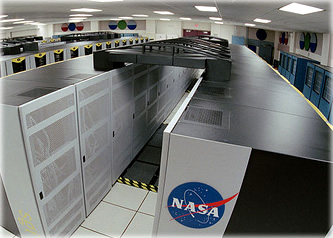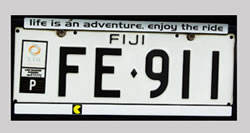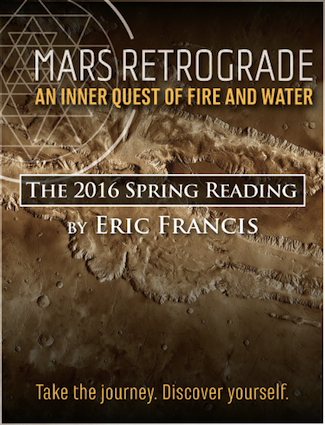Hello — Len regrettably does not think he’ll be able to finish his post for today, due to feeling under the weather. For your dose of astrology today, please see the full edition of Planet Waves at the top of this page. Len will be back with his Tuesday column. — Amanda P.
Category Archives: Welcome

Democracy Now! — Tuesday, May 24, 2016

Visit the garden of delights that is the Planet Waves Boutique, and find the top-quality reading, class or membership that you need, or that special gift for a loved one.

Berta Cáceres, who like Freddie Gray was unjustly killed. Now there are questions over how far the U.S. was involved in her assassination. Image: video still
A Baltimore police officer has been acquitted on all charges for his role in the arrest of Freddie Gray, who died of spinal injuries last year after he was arrested and transported in a police van. Officer Edward Nero faced misdemeanor charges of second-degree assault, reckless endangerment and two counts of misconduct in office. Nero was one of six officers charged in Gray’s death.
Judge Barry Williams handed down the verdict in a bench trial on Monday, ruling that “the state has not met its burden” to prove Nero’s guilt “beyond a reasonable doubt.” The ruling was met with little surprise from the community in a case that many said was the state’s weakest.
Freddie Gray died in April from a spinal injury sustained while being transported in the back of a police van. Gray’s family and attorney say his voice box was crushed and his spine was “80 percent severed at his neck.” Nero was one of six officers charged in Gray’s death.
Officer William Porter was the first one to go to trial, charged with involuntary manslaughter, second-degree assault, reckless endangerment and misconduct in office. In December, Judge Williams declared a mistrial in Porter’s case after jurors were unable to reach a verdict on any of the charges after three days of deliberation. Now all eyes are on the upcoming trial of officer Caesar Goodson, the driver of the police van and the only officer charged with murder in Gray’s death.
Amy Goodman spoke to Rev. Heber Brown III of Pleasant Hope Baptist Church, and Billy Murphy, attorney for the family of Freddie Gray. Murphy reported that “the community is exceptionally happy with Judge Williams’s handling of these cases. And they have full confidence that he’s able and willing to administer justice.” However, there are ongoing concerns about other aspects of the judicial process, as Brown explains:
Mr. Murphy is a expert jurist here and has knowledge of the inner workings of how the legal system works. But for everyday people, for laypeople like myself who don’t have that level of expertise, there is a great frustration with the pace of this case and the results of the case, as well, especially when you consider, Amy, that those who were charged in vandalizing stores were convicted with a great, deliberate speed, but it seems like those who were involved or connected in the death of Freddie Gray, the process slows down to snail’s pace.
And so I think that statement is an example of what I spoke of earlier, that people more and more are saying, “Enough with looking to the legal system or to City Hall to provide justice for us. We can work ourselves.” And so, with Baltimore United for Change, we are involved in organizing and building for power. And what that means on the ground is establishing black-led organizations, supporting black-led organizations, from public policy think tanks to freedom schools to solidarity economies and cooperative economics, to even an alternative food system. We are taking the role and responsibility to define what justice should look like for us, instead of waiting for these systems to tell us what justice should look like.
Also today, a growing number of activists in Honduras and in the United States are calling on the United States to stop funding the Honduran military, over accusations that state security forces have been involved in human rights violations, extrajudicial killings—and the murder of internationally-renowned environmentalist Berta Cáceres.
Before her death, Berta and her organization COPINH was long the target of repression by elite Honduran security forces and paramilitary organizations. Earlier this month, four people were arrested in connection with her murder, including Army Major Mariano Díaz Chávez and Edilson Duarte Meza, who is reportedly a retired captain. Press accounts report Díaz Chávez graduated from the prestigious U.S. Ranger-supported Honduran special forces course TESON, raising questions about whether U.S.-trained troops were involved in carrying out Berta’s murder.
The show additionally examines Hillary Clinton’s role as secretary of state during the 2009 coup that ousted Honduran President Manuel Zelaya, and looks at the campaign to release 19-year-old student Wildin Acosta, who is threatened with deportation to Honduras and was detained in his final semester of high school. There have been reports that ICE is launching a brand new month-long campaign of raids specifically aimed at rounding up and deporting undocumented Central American mothers and children.
We are honored to offer this broadcast as part of our affiliation with the Pacifica Network. Find out where the Democracy Now! crew is visiting next during the show’s 100-city tour, celebrating 20 years on the air.
Astrology Secrets Revealed: The Gemini Solar Chart
This is a special edition of Planet Waves TV for Gemini. I explain how astrologers know what they know about your sign — explaining what a “solar chart” is and why it reveals so much. This is the technique used by the very best Sun sign astrologers: Patric Walker, Jonathan Cainer, Linda Goodman and others of that caliber. I learned the technique through studying Patric’s work carefully, and chose to become an astrologer.

Configuring Ground (for kids!)
Or, Have You Talked to Your Children About Media?
Taught a grade 5/6 class in rural Ontario on Friday (January 15th, 2016). Ten- and 11-year-olds. An introduction to thinking about the effects, as opposed to simply the uses, of technology — which is what the point or goal of “media literacy” should be. Critical engagement. Media Criticism. This was the first time anyone had talked to them in such terms. It is both a privilege and a responsibility.
Figure and Ground: a technique for seeing the whole situation
We talked about ‘figure and ground’ where ‘figure’ is any given technology (like smart phones) and ‘ground’ is everything that goes along with it — electricity, software, manufacturing, education, internet, networks, money, et cetera — all the things that make the technology possible, and all the things that the technology makes possible. ‘Ground’ here is what is meant by ‘medium’ in the McLuhan sense — “an environment of services and disservices”.

An example of Marshall McLuhan’s annotation for ‘figure/ground’, from his library.
We spent quite a while making a white board fill with examples of those things needed for the smart phone to work. Also, all the things we use it for. The youngsters were engaged and having fun.
Then we talked about what would it look like if tomorrow smart phones didn’t work, and weren’t going to work. What would the effect be on their lives, on the world?
Then the internet. What would their lives be like without the internet?
Then electricity. What if we took away electricity?
The point being, that there’s a whole range of things to consider about technology, aside from the obvious i.e. what we can do with them. Technologies change the world, change us. Before you know it, they’re such a part of our lives that we’d be almost helpless without them. They change us socially, and neurologically.
The point being, that considering the ‘bigger picture’ (ground) allows us to make informed choices — fair trade, vegetarianism, shopping locally. Consumers have choices to make which can impact not just their immediate lives. Developers have choices to make as well, that have serious consequences. And if we ever got our stuff together on a large scale, we could decide what we want our societies to be like rather than coping with the fallout from the consequences of decisions we didn’t know we were making. I know, big words.
The point being, that it’s high time we started conversations like this with young people.
I left them with this distillation of that discussion: “We shape our tools and thereafter our tools shape us.” They got it immediately.
Andrew McLuhan is the grandson of Marshall McLuhan and a great friend of Planet Waves. This piece originaly appeared on the site Medium.com on Jan. 16, 2016. Please share any comments you may have here, or you may reach Andrew at andrew@umeom.com

Archive pick: What do I do if…?
In today’s archive selection from the Aug. 28, 2009, members’ edition, Eric answers a question from a reader who was expecting to get laid off at the start of a Mercury retrograde. Sometimes a brief delay really can save you months of frustration. — Amanda P.
By Eric Francis
One of the recurring questions I get as an astrologer is, what do I do if I have to make a decision or purchase or important move while Mercury is retrograde? Here’s a question that came in this morning, typical of the genre:
I am about to get laid off from my job. I won’t go into the details, but I’ve worked for this company for 8 years, I’m pretty good at reading the signs. (They’re firing old timers like me so they can bring in newbies for lower salaries.) I think the axe is going to fall right after Labor Day, when all the employees come back from the holiday. I am 90% sure I am next to go. So if they can me, it means I will have to conduct a job search during Mercury Retrograde! I have no choice, I don’t have a lot of savings and I need to get a new job ASAP. But I know that starting new things, like jobs, during a retrograde is not such a hot idea.
 |
|
Help Wanted!
|
There are a few layers to the answer. Astrology is all about time and timing. If you have something really serious, interesting or with a lot of potential going on, that’s the time to hire an astrologer to work out the details with you, and to help you find the silver lining. What an astrologer would do is create a chart for whatever it is that needs to happen. Sometimes you just cannot wait. Most of the time you can; but there are those rare few instances.
Short of working with an astrologer, think logically, and astrologically. Mercury is not retrograde for that long. The station direct is Sept. 29. If the reader expects to be laid off the first week of September, he would be unlikely to find a new job within two weeks; that would be a warm-up to a basic search. It’s important to not make what you want to be a “final commitment” before Mercury is about to change directions. In my experience, most of what happens during the retrograde is wiped clean after the station direct. Most things — not everything. It would be a good test of what has sticking power.
The reason not to make commitments during Mercury retrograde is not because “you’re not supposed to” but rather because, in general, it saves time to wait. By saves time, I mean you could save yourself a year of misdirected effort by pausing for a couple of weeks.
Part of what Mercury changing directions is about is that the truth comes out. It’s like shaking the tree of the mind and some extra nuggets tumble down. Whatever shows up is usually important or at least meaningful information. And this is information you will benefit from working with. But you can’t do that if you don’t know what it is; and that takes patience and some skill at observation.
Remember that the three days on either side of the station (retrograde or direct) are the most turbulent and unpredictable. Those are the most meaningful days to pause, no matter how urgent the situation is. If your boss is pushing you, either delay, or plan to redo what you’re doing. The astro-logic to this is simple to follow: a highly influential, close-to-home planet like Mercury, so intimately connected to our mental environment, changes direction; it’s like it changes its mind, or thinks in a different way. So part of what we’re doing is working with that current and arranging life consciously so that it works better.
 |
|
The Columbia Supercomputer at NASA’s Advanced Supercomputing Facility. Photo: Wikipedia.
|
This is a little like checking the tidal chart before you try to enter a harbor in your boat; if you enter while the tide is going out, it might take you hours to go a mile.
There are times when we have to make a move, decision or purchase with Mercury retrograde. That’s the time to read the fine print; get the service plan; and be ready with Plan B. At least you can say that things tend to work out differently under this influence; they are subject to change and reassessment; and you need to be prepared. For that, you merely need to remain open and flexible and have extra patience.
One of the most common phenomena I’ve noticed with Mercury retrograde is thinking something is wrong when it’s not. Mercury is a trickster, which amounts to tricky. Go for minimal solutions, and if you have to delay or work on a ‘partial system’ that’s usually advantageous. Part of the trickiness is knowing what problem you’re trying to solve. Often there is no problem, life is just acting like there is one. Other times there’s a twist. Such as, you’re working on one issue and you run into a problem but you don’t know you’re dealing with an entirely different thing at the same time — such as a loose cable.
Watch out for these things. When all else fails break out the scientific method of hypothesis – design experiment – conduct experiment – note conclusion – repeat to make sure you got it right the first time or two. In short, use your mind, and remember that not everything has to happen today.
Publishing schedule update
Hello — Amanda Moreno was unable to submit a column for today, but she should be back next week. I’ll have one of Eric’s archive selections posted shortly to fill the gap. — Amanda P.

Rumpusing
I have always liked the word “rumpus” — a word I first heard as a child playing with my young cousins in the Rumpus Room, as my uncles liked to call it. It was the room where the family chilled out in their various easy chairs to smoke cigars, put their feet up, talk loudly, drink whiskey and watch television.

It was there we kids could feel the energy of their relaxation and candor, empathetically translated into the child’s language of play: the evening’s easy chairs were our morning trampolines. I become breathless just remembering being that young.
Rumpus — a noisy clamor. A confused, or disruptive commotion. This is what happened this weekend at the Nevada State Democratic convention, where the delegates formally declared and certified their apportionment of Clinton and Sanders delegates who will be seated at the Democratic National Convention near the end of July. The final apportionment was 20 Clinton, 15 Sanders. That was the easy part.
The hard part was how they got there, which according to the news was not standard. At what should have been a tedious, all-day affair — because boredom is standard for State party conventions — there were strong protestations with rumpuses throughout the day, which included challenges to existing convention rules by Sanders supporters. California Senator Barbara Boxer, a regional representative at the event, was called a bitch.
Then there was the abrupt ending of the convention, which had already run three hours overtime due to the disruptions taking place throughout the day. The convention venue’s security could no longer handle the protests and were working overtime. They wanted it all shut down. At the end chairs were thrown onto the stage by frustrated Sanders supporters. The rumpus in Nevada took over the weekend news cycle.
We heard lots of conflicting reports over the weekend as to whether there were rule changes to keep Sanders from winning Nevada. Apparently, there were no new rules made for the purpose of clinching the deal for Clinton. There was only the application of existing rules, which required that the delegates should be registered Democrats at Nevada’s State Democratic Convention. This is not the first time Sanders supporters, many of whom are Independents, learned their lessons the hard way as to how to support their candidate.
As I mentioned, the final convention result netted 20 delegates for Clinton and 15 for Sanders. This validated the Feb. 20 caucus results for both candidates.
Are we at the news-standard meme of Democrats in disarray? Possibly. Twenty-first century COINTELPRO disrupting party politics? Could be. Anything is possible in this election year of surprises and upheaval, starting with the entrance of a lifelong Independent candidate as a near-successful candidate for the Democratic Party nomination. Let alone a shoot-out-the-mouth immature billionaire narcissist who bucked party convention on the Republican side and is the presumed party nominee. I guess I am having a hard time being surprised by any of it during this 2016 political campaign.

The Spring Reading is now published. You may order all 12 signs here or choose your individual signs here for immediate access. You may listen to a free audio introduction here now.
I am certain that Mars, Uranus and Eris are increasing the psychic irritation the voters feel these days — the itches that are hard to scratch as well as the disruption caused by discomfort and dissatisfaction with the establishment. Both Reince Priebus on the Republican side and Debbie Wasserman-Schultz on the Democratic side are definitely being chafed from within, with intra-party challenges from the Teapublicans and the new Sanders Democrats.
In my heart of hearts, I feel good about the rumpuses. We’re watching the birth of something that has yet to fully form.
It’s healthy for both parties and for our democracy as long as it doesn’t get out of hand, and that we don’t fall and hurt ourselves in the process. Trump’s challenge is serving a hard slap, waking the Republican Party up; they’re paying the price for courting political nihilism in the form of the corporate-owned Tea Party.
Progressives’ dissatisfaction with the Democrats’ inability to strongly work the party back toward the left — and eschewing the party’s corporate interests — birthed the Sanders ‘revolution’. It’s making Democrats be Democrats again, which I think was the ultimate aim of Bernie Sanders candidacy all along.
Time will tell. It’s another sixty-five days before the Democratic National Convention in Philadelphia — an irony not lost on us: Philadelphia is the city that birthed the Declaration of Independence and was listless and uncomfortable with rumblings of a revolution against the crown. What will be wrought there this time? An expanded sense of unity or a new show of resistance? How fast can we grow out of the rumpus room without hurting ourselves?

Archive Pick: A woman, risen from the sea
Editor’s Note: In this excellent lead essay from the May 14, 2010, members’ issue, Eric offers a list things you can do if you want to facilitate the process of self-actualization. At the time that he wrote this, he was looking ahead to a Jupiter-Uranus conjunction; now, the Uranus-Eris conjunction of June 2016 is pushing (or glossing over) another layer of identity awareness. — Amanda P.
Dear Friend and Reader:
The other day I got curious about the term ‘self-actualization’, which I hadn’t heard for years. The first time I encountered it as a kid (in the ’70s, when people seemed to talk about this stuff more than we do today) I intuitively knew what it meant. To me, it was about the process of becoming real, that is, of becoming fully human.
 |
|
Mediterranean Sea, from a series called Daybreak in the Path of Annularity, in Valencia, Spain, 2005. Photo by Eric Francis.
|
When I looked it up, I learned the term was invented by Kurt Goldstein (1878-1965), a German neurologist and psychiatrist. Kurt was one of the first theorists in the Gestalt Therapy movement, and one of the original modern holistic thinkers. His clinical work involved studying the relationship between the mind and the brain, in brain trauma patients; Gestalt puts emphasis on the mind-body connection. Holistic theories emphasize unity and integration as expressed through our natural human tendency to grow and mature.
It was Abraham Maslow (1908-1970) who put the concept into popular language. It was at the top of his famous ‘hierarchy of needs’, that pyramid published in a 1943 paper that you had to memorize in psych class. It starts with basic biological needs beginning with touch, food, breathing and sex as the foundation of existence. It extends upward toward safety, love, belonging, self-esteem and finally, at the top, we have self-actualization. This includes creativity, spontaneity, problem solving, acceptance of facts, and morality.
I will take an editor’s liberty and update that last one to ‘ethics’, since this applies a more flexible approach to difficult questions. I will add mortality, since that’s a key element in consciousness of one’s full humanity. And I would check one other thing: these days it takes a good bit of creativity and problem solving (an advanced need, in his theory) to meet the fundamental needs at the bottom level. We can at least thank Maslow for getting the term self-actualization into our hands, and for reminding us that psychology starts with biology.
He had one other idea that I like: if you want to understand how healthy people function, study them, and not pathological cases. So that is what he did.
 |
|
Water paints the rock on the Grandmother Land in Ulster County, New York, hours before the Taurus New Moon. Photo by Eric Francis.
|
Maslow also emphasized the innate curiosity in humans (which is true for nearly every other animal, by the way). He honored self-actualization as a drive or motivation that he believed fuelled all our other endeavors. For him, it was the prime mover — this, not survival. Maslow’s concept was about embracing human potential, and he was one of the fathers of a movement by that name.
Which brings me to the extraordinary astrology of June 2010: the Jupiter-Uranus conjunction in Aries. If any aspect says self-actualization, this is the one. The ‘self’ piece is Aries, the sign of ‘I am’, the key that turns the ignition of consciousness. We each have Aries in our chart somewhere, and where we have it is one zone where we tend to be driven by self-actualization: to waking up and being real.
Jupiter is a planet that is rich with potential. It’s like this cosmic bank account we have, from which we can draw down wisdom and envision wider possibilities. Where Jupiter is we seek expansion and learning; we seek to enrich our minds. And as I write, Jupiter is heading for Aries, where it will arrive on June 6. Jupiter comes back to Aries every 12 years. The energy feels like the Chinese Year of the Dragon: vibrant and daring.
Uranus is a planet that likes to precipitate potential; its job is to actualize. If spontaneity and curiosity are part of being self-actualized, then Uranus is the spark plug. It doesn’t really care what it takes or what has to happen to make something real. Uranus follows no special rules, which is why it’s involved in changing the known order of reality. That includes leaps forward in creativity, thought and imagination; with inventions; and with revolutions of various kinds. Uranus, which has an 84-year orbit, arrives in Aries on May 27, resetting its cosmic cycle.
On June 8, the two form an exact conjunction on something called the Aries Point. This is the first degree of the Western zodiac, which begins with the sign Aries. It’s the position of the Sun on the first day of [Northern Hemisphere] spring, and it’s also called the vernal point. It acts just like a focus of energy that links up what we think of as the ‘personal’ realm and the ‘collective’ realm. When we experience events that are on the Aries Point (such as this conjunction) or square or opposite the Aries Point, the world seems to go wild, and we can get drawn into the drama. Big events, which often seem negative, can involve this point — for example, the Sept. 11 incident or the Asian tsunami; or Woodstock, or the Moon landing. It is one of the most predictable things in a chart, in terms of this kind of response in physical reality. In a word, it is big.
 |
|
Photo by Eric Francis.
|
In recent years we’ve had a lot of Aries Point activity, and we’re about to have more. Recent events include Pluto ingressing Capricorn (square the Aries Point) and Saturn in the process of changing signs to Libra (opposite the Aries Point). This has already stirred up a lot of energy: lately (however you define lately) it’s been one jarring event after the next trying to get our attention. And now the Aries Point activity shows up directly in Aries, as these two mighty factors align directly in the first degree of the zodiac. While that first degree has the ‘political as personal’ feeling, that nexus of individual and collective life, it’s also about personal awakening.
There’s a method of astrology that gives a visual symbol to each of the 360 degrees of the zodiac. These are called the Sabian symbols, and if you’re new to astrology I invite you to check out this gift. My favorite version is in an easily available book called An Astrological Madala by Dane Rudhyar. The degrees were channeled randomly by a clairvoyant working with an astrologer, such that the symbol for each degree was channeled without the clairvoyant knowing which degree she was channeling, and in random order. The first degree of the zodiac came out with the symbol: A woman just risen from the sea. A seal is embracing her.
This image evokes the birth of Venus, and the emergence of humanity from the sea of life, or the sea, literally. It implies individual awareness distinguishing itself from the unconscious, or the mind’s awareness emerging from the emotions. The implication is that the sentient environment that surrounds us (such as a seal) is waiting for us when we arrive on the planet.
 |
|
Photo by Eric Francis.
|
More than this symbol is behind the obvious power of the Aries Point, though I think it’s a great illustration of its potential — and that potential is what the Jupiter-Uranus conjunction is helping us make real, right now. It’s doing so in the midst of a world that once again seems to be spinning off its axis. In a Mercury retrograde that spans between early April and late May (including all the prep and follow-up phases of process), we got a glimpse into how fragile the world is, and how closely connected its levels of reality are.
In those few weeks (counting only up until publication time) we experienced a volcano that disrupted air traffic across Scandinavia and Europe, which effect rippled out across the planet, rearranging lives and stranding people in remote parts of the world; an undersea oil volcano (still out of control, with no end in sight, compounded by hundreds of thousands of gallons of grease-dissolving solvent being dumped into the Gulf of Mexico), a bitterly fought election in the UK, massive flooding in Tennessee and other states, tornadoes in Oklahoma, banking fraud by Goldman Sachs exposed (which demonstrated that they helped orchestrate the recession, for profit), a debt crisis flooding across Europe with a trillion euro bailout committed to during the retrograde!, a 1,000-point dive in the stock market that nobody can figure out, and an attempted terrorist attack in New York City. After spending nearly a trillion dollars on wars in Afghanistan and Iraq, the new al Qaeda we’re supposed to worry about turns out to be our old friend Pakistan.
These events all have that Aries Point feeling — and we haven’t even reached the conjunction yet. Which brings me back to self-actualization. These are all wake-up calls. They are the public version: we are getting plenty of them in our personal lives as well, and I’m here to tell you there are many connections, all of which are guiding us to take a unified view of existence. And by some accounts this is starting to happen; though there are many signs of slumber, there are many other signs of awakening.
 |
|
Fae and Eric. Photo by Dani.
|
I have a few ideas for what we can actually do, if we want to facilitate the process of self-actualization.
1. Know thyself. Part of getting to know yourself may involve admitting you don’t know yourself. I suggest you open up, allow or invite your curiosity about your true work, your authentic sexual and relational orientation, and other information about what you think you’re doing on the planet at this time. If you haven’t already figured out that this is an extraordinary and unusual time to be alive, keep getting to know thyself. This includes knowing what you want.
2. Relationship starts with self. Our relationship to our self , which is existence, is what we see animated and expressed in our relationships with others. Therefore, cultivate a deeper relationship with your self. You can discover, through this, how many different levels you exist on. Dreams are a meaningful, helpful and easy way to tap into what is sometimes called the unconscious. They always have a message for us, and usually that message presents a solution to a challenge, or a window into who we really are.
3. Relationship is the foundation of community. Part of what is holding humanity back at this time is a need to rethink our fundamental bonds with others, which are the basic patterns of existence that ripple out into the world. Most literate people know that there are a great diversity of ways to explore relationships — but we tend to limit ourselves to a very few. Exploring outside orthodox modes of relationship helps us weave community and have a more complex sense of who we are, and what we mean to others and what they mean to us. Get to know your neighbors, including the critters and the businesses that are near your home. If you love someone, give yourself permission to love them, no matter what the ‘rules’ say you should do. Learn how not to be a slave to guilt, but rather one who lives in service of love.
4. Know what you eat. A revolution is underway on the meaning of food. As we reach the end of the petroleum supply, all of our concepts of food and the production of food will need to be rearranged, and even as we’re blitzed by hamburger ads, we’re well into this process. Most of what is called food is neither nourishing nor sustainable, and it’s nearly all made from or with petroleum. The first step in the process of change is getting to know exactly what you’re eating, whatever it happens to be at the time — including knowing who produces it.
5. Know your body’s special needs, including nutritional needs. Every specimen of humanity is different, and you need to know the ways in which you’re different. This includes discerning food sensitivities, knowing the way you’re influenced by your environment, and how your physical nature influences your psychology.
6. Know your technology. We live in a haze of technology but we are largely ignorant of how it works, what we can really do with it, and its effect on our minds and bodies. For the most part we don’t understand the power we hold in our hands. Make sure that you are in the creative role; that you are creating your technology rather than letting it create you.
7. Be yourself. We humans tend to spend a lot of energy trying to convince people of what we are, which gets in the way of being who we are. Save your time, money and soul and simply be yourself, tell the truth and notice the results that you get, in the long run as well as the short.
8. Life is a camping trip. We are visitors on this planet, and though it’s our temporary home, we live at the mercy of the environment. Remember that in a sense you are always outside, always in relationship to your surroundings.
9. Choose what you want. You know what you want — and remember that the power to decide is one of our few true freedoms. To do this you will likely have to understand the nature of guilt, which sends you the opposite signal. Guilt and desire are mutually exclusive.
10. Your actions have consequences, and our actions as humanity have consequences. We have lived for a long time thinking that they do not. Karma is really as simple as being aware of your participation in the experience of cause and effect.
11. Keep your vibration high. World events, by accident or design, are having the effect of lowering the vibration of many people, even if they’re not addicted to negativity. It may be challenging to both maintain awareness of world events and keep a positive focus despite them, but welcome to the greatest challenge of our moment. As big as any problem seems, global or individual, our potential is infinitely higher, and the way we get there is by feeling good, aware and embracing of our true desire.
Yours & truly,
![]()
